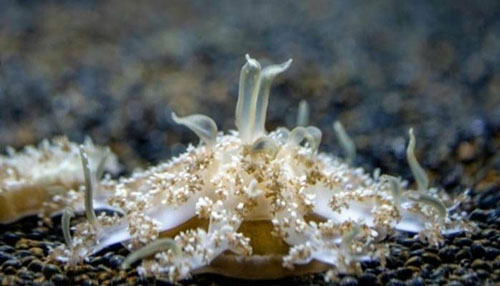Florida
Scientists have found that a species of the jellyfish throw venom grenades to create stinging water to snare their preys.
The Cassiopea xamachana jellyfish, found in shallow waters around Florida, the Caribbean and Micronesia, is a frequent nuisance to snorkelers and surfers who appear to get stung without touching the creatures.
It was thought that the stings came from detached tentacles or younger specimens. But a team from the US Naval Research Laboratory realised that Cassiopea had in fact evolved a novel way of hunting without tentacles.
The creatures lay on their backs and lob globules of venom-enriched mucus into the water overhead.
These structures, called cassiosomes, can kill prey and are the likely cause of ´stinging water,´ a phenomenon experienced by snorkelers and fishermen in tropical waters.The team analysed the cassiosomes and found their outer layer to be coated with thousands of stinging cells. While the venom is not strong enough to pose a serious risk to humans, it does destroy skin cells and is deadly to smaller organisms.—AFP










